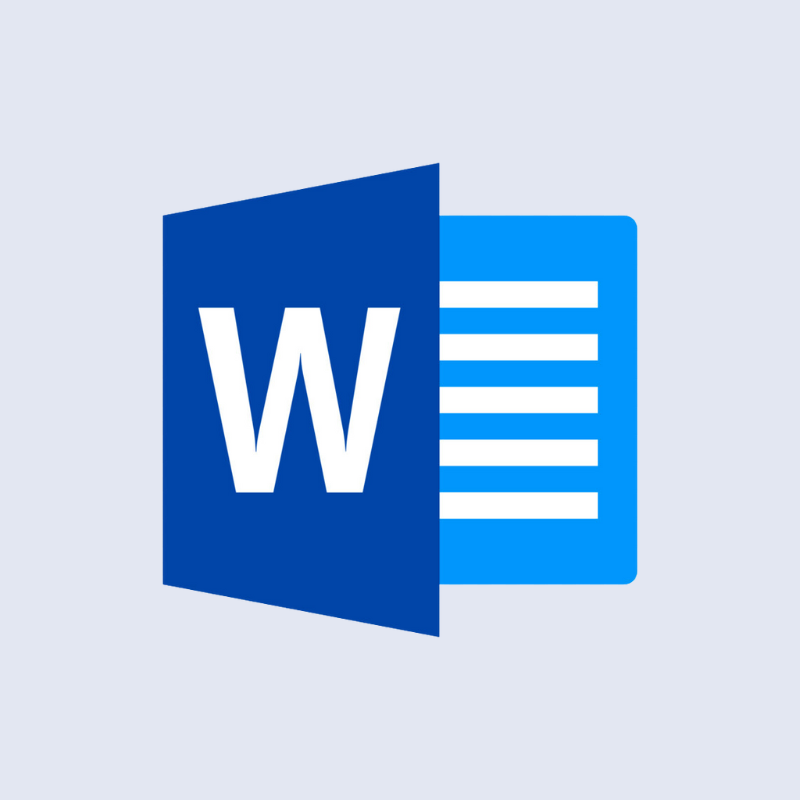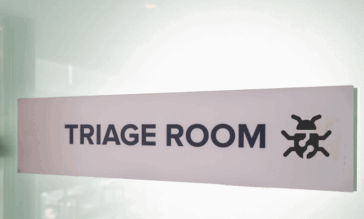Unraveling the Complexities of Word Documents

Word documents are indispensable in business operations due to their flexibility, ease of use, and universal accessibility. Businesses across the globe rely on Word for drafting, editing, and sharing a wide array of documents, including reports, memos, contracts, proposals, and manuals.
Its compatibility with various operating systems and devices makes it a versatile tool that enhances collaborative efforts within a business setting, increasing productivity and efficiency in the workplace. The Office Open XML (OOXML) format used by Word documents integrates across the entire suite of Microsoft Office applications, facilitating smooth and efficient workflows, which is why Word is the most common program businesses use.
The widespread utilization of Word documents also brings significant concerns, primarily due to their inherent complexity, which introduces heightened security risks. The complexity of Word documents is often overlooked. Its flexibility for including complex objects and elements, including links, images, videos, and even other Office documents, makes it a valuable tool for business.
The capability to embed tables, charts, and graphs from Excel or incorporate slides from PowerPoint presentations directly into Word documents enhances data’s comprehensive and coherent presentation. However, the ability to embed layers of content in Word documents leads to intricate structures of business documentation, with each layer potentially increasing security risks. These complex structures create numerous variations, becoming hotspots for vulnerabilities in the code of applications processing the file, which malicious actors might exploit by embedding threats that activate upon file opening.
In this blog, we explore the anatomy of a Word file to discover the various ways hidden threats can be embedded and discuss how to neutralize them.
Peeling Back the Layers: The Complex Anatomy of a Word Doc
A Word document is an OOXML file with a sophisticated structure encapsulating diverse content within its layers. An OOXML file is a ZIP archive containing various components, including data elements like text, images, or interactive features. Each piece in an OOXML document is meticulously defined and organized within containers and XML tags, facilitating quick and precise access. With a dynamic interplay of XML schemas and embedded content, OOXML documents guarantee consistent display and interaction, irrespective of the device or application used for access, much like their PDF counterparts. The structure supports embedded complex content like images, charts, and other multimedia elements, ensuring the document retains its functionality and appearance across different platforms.
Building the Foundation
The [Content_Types].xml section is a crucial and mandatory component in an OOXML document, enumerating the various content types present within different parts of the package and serving as an essential guide for software applications during the rendering or processing phases. By precisely listing the nature of data embedded in each document segment, this section ensures that applications can accurately interpret and handle the diverse content types, thereby enabling the appropriate display or manipulation of the document’s contents.
Forming Relationships
The “_rels” folder contains crucial relationship files delineating the connections and dependencies between different document segments. These relationship files act as a navigational tool, enabling efficient traversal through the complex structure of the OOXML file and facilitating accurate interpretation of its intricate architecture. The “_rels” folder ensures that applications can effectively understand and render the document’s content coherently and organized by providing a clear roadmap of how various document parts relate and depend on each other.
Managing Metadata
Properties for the entire document are stored in the “docProps” folder. This folder usually comprises core properties, extended properties, and a thumbnail preview of the document. Core properties are fundamental attributes, often including the document’s title, author, and creation date, providing essential information about its origin and identity. In addition, the section contains extended properties, which are designed to hold application-specific data, offering additional, often more specialized, information related to how the document interacts with particular software applications. Together, these properties provide a comprehensive overview of the document’s metadata, aiding in its identification, management, and utilization in various software environments.
Establishing Storage
The primary storage for a Word document is in the “word” folder within an OOXML document. Similarly, Excel and PowerPoint utilize “xl” and “ppt” folders for their content. Within the “word” folder, the document.xml file is pivotal, containing the actual text that constitutes the document. Additionally, the folder may encapsulate other supportive elements, including folders and files related to styles, themes, fonts, and media, providing a rich and versatile set of document creation and editing tools. The specific contents housed within this folder can differ substantially, reflecting the complexity of the individual document and the array of features deployed in its construction, thus accommodating a wide range of document designs and requirements.
Pulling Pieces Together
Located within the “word” folder, the “document.xml” file holds a Word document’s main body of text. It meticulously organizes the text using a series of XML tags that demarcate paragraphs, enforce formatting rules, designate styles, and define various other text properties, ensuring the content is structured and displayed as intended. In Excel and PowerPoint files, similarly crucial files exist but bear different names; nonetheless, they serve the analogous purpose of containing and structuring the primary content of the document, playing an indispensable role in the organization and presentation of the document’s core information.
Building Beyond Basics
Within an OOXML package, users may find additional folders and files beyond the fundamental components, and these elements vary based on the unique content and features of the specific document. Such elements can include:
- Images Folder: Holds graphics and pictures embedded in the document. These images can be in different formats, including JPEG, PNG, GIF, etc.
- Media Folder: Contains multimedia elements, such as audio and video files, that are integrated into the document.
- Themes Folder: Stores theme information, which affects the overall look and design of the document by applying a set of coordinated fonts, colors, and graphic effects.
- Charts and Diagrams: Holds files related to charts, graphs, and diagrams incorporated into the document, providing visual representations of data.
- Fonts Folder: Contains font files for the specific typefaces used in the document, ensuring consistency in text appearance across different devices and systems.
- Tables: Files related to tables embedded in the document, used for organizing and displaying data.
- Custom XML Data: Stores any custom XML data that may be used for various purposes, like storing metadata or facilitating integration with other systems.
- Controls and Macros: Files related to interactive controls (like buttons or text fields) and macros (automated sequences of tasks) used in the document.
- Embedded Objects: Any other embedded objects, like PDFs, spreadsheets, or documents.
- External Links: Files that manage links to external resources or documents.
Each of these elements plays a pivotal role in contributing to a document’s completeness, effectively conveying the intended message with clarity and precision.
Risks in Word Files
Word documents offer widespread versatility, allowing for rich presentations across different platforms. However, this flexibility introduces security risks. A notable risk is the ability of Word documents to contain macros—scripts written in Visual Basic for Applications (VBA). When a user opens a document, these scripts can execute automatically. While some scripts are benign, others may be malicious, performing harmful actions such as extracting sensitive data or installing malware on a user’s system.
Word’s ability to embed various file types, including executable files (.exe), is compounding this challenge. Users might inadvertently run these files, unknowingly installing malware on their computers. Users can help mitigate some risks by exercising caution, especially with documents from untrusted sources, and avoiding running macros or extracting embedded files without verification. However, this is not a perfect solution.
Attackers consistently create methods to exploit vulnerabilities in Microsoft Office software, notably Word. Outdated software, lacking the most recent security patches, is especially vulnerable. With the capacity to include hyperlinks and rich media, Word documents can also be crafted to resemble legitimate documents, providing opportunities for malicious activities. Attackers may use these features to conduct phishing attacks, deceiving users into disclosing sensitive information. Additionally, they might exploit weaknesses related to media content handling to jeopardize users’ systems.
Safeguarding Word Docs with AV & CDR
Antivirus software (AV) serves as a crucial first line of defense against infections in Word documents by actively scanning and monitoring files for known malicious code or suspicious behavior. When a user attempts to open or download a Word document, the AV software immediately examines the file for any embedded malware, viruses, or macro scripts identified as threats in its database. It also employs heuristic analysis to detect new, unknown viruses or novel variants of known viruses. If a threat is detected, the antivirus software takes predefined actions to neutralize it, such as quarantining the file, blocking its execution, or completely removing the malicious content, safeguarding the user’s computer and data from potential harm.
While AV is effective for known threats, Content Disarm and Reconstruction (CDR) creates an additional layer of protection for Word and other documents. Instead of meticulously analyzing each file for various threats, CDR takes a comprehensive and preemptive approach. It reconstructs files by utilizing only components that are verified as safe. This method guarantees that any embedded threats or unknown elements within the original file are removed, resulting in a cleaned version that maintains its essential functionality. Since it employs solely recognized safe components, CDR protects against zero-day and other novel threats, helping to balance the limitations of AV.
Integrating CDR into the organizational infrastructure makes files that traverse boundaries sanitize automatically. This precaution is imperative as files shared among various departments, external collaborators, or entering the organization’s network might harbor concealed threats. Incorporating CDR routinely in data transfer protocols within the organization substantially mitigates these risks, fostering a secure digital environment.
Votiro Makes Word Documents Safe
Votiro provides robust protection for essential business documents, including Microsoft Office and Word files, safeguarding them from hidden threats. The solution combines AV technology, identifying and neutralizing known threats, with CDR technology. This duo ensures the removal of hidden malware and exploits and the preservation of your content’s integrity during sanitization. Votiro effectively defends against various threats, including document-based attacks, file-based vulnerabilities, and zero-day threats across multiple file formats. Through careful reconstruction, Votiro retains all safe functionalities of a file, preventing the loss of crucial context or features during the process.
Avoid letting the intricacies of files like Word documents expose your organization to concealed threats. Partnering with Votiro to strengthen your defenses against cyber threats, thereby safeguarding your precious assets.
Contact us today to learn more about how Votiro raises the bar for preventing hidden threats in files to keep your organization secure while maintaining productivity.
News you can use
Stay up-to-date on the latest industry news and get all the insights you need to navigate the cybersecurity world like a pro. It's as easy as using that form to the right. No catch. Just click, fill, subscribe, and sit back as the information comes to you.
Sign-up Here!
Subscribe to our newsletter for real-time insights about the cybersecurity industry.



